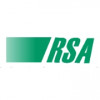Top 50 Kubernetes Interview Questions and Answers
Updated 19 Jul 2025

Asked in CtrlS

Q. How do you deploy a web application into Kubernetes?
Deploy webapp into k8s by creating a deployment YAML file and applying it using kubectl command.
Create a Docker image of the webapp
Create a deployment YAML file with necessary specifications like image, replicas, ports, etc.
Apply the deployment YAML ...read more

Asked in Infosys

Q. How have you implemented Docker and Kubernetes?
I implemented Docker and Kubernetes to containerize and orchestrate my NodeJS applications.
I used Docker to create containers for my NodeJS applications, ensuring consistency and portability.
I wrote Dockerfiles to define the environment and dependenc...read more

Asked in Infosys

Q. What is an ingress controller and how is it used in Kubernetes networking?
Ingress controller is a Kubernetes resource that manages external access to services within a cluster.
Ingress controller acts as a traffic manager, routing incoming traffic to the appropriate services based on rules defined in the Ingress resource.
It...read more

Asked in Bosch Global Software Technologies

Q. How does Kubernetes differ from Docker Swarm?
K8s is a container orchestration tool while Docker Swarm is a clustering and scheduling tool for Docker containers.
K8s is more widely used and has a larger community support compared to Docker Swarm.
K8s supports more advanced features like auto-scali...read more
Asked in National Career Service

Q. What are the steps to deploy an application to Kubernetes?
Steps to deploy an application to Kubernetes
Create a Kubernetes deployment file with specifications for the application
Apply the deployment file using kubectl apply command
Monitor the deployment using kubectl get pods command
Expose the application us...read more

Asked in Dover India

Q. How will you ensure the Kubernetes cluster is up and running?
To ensure Kubernetes cluster is up and running, monitoring tools, automated alerts, and regular health checks are essential.
Set up monitoring tools like Prometheus and Grafana to track cluster health and performance metrics
Implement automated alerts ...read more

Asked in Ubus Technologies

Q. Explain the components in Kubernetes.
Kubernetes components are essential building blocks that enable containerized applications to run and scale efficiently.
Master components: control plane components that manage the cluster
Node components: run on each node and manage containers
Networki...read more

Asked in OpsTree Solutions

Q. How fluent are you in AWS/Kubernetes?
I am highly fluent in AWS and Kubernetes, with extensive experience in designing, implementing, and managing cloud infrastructure.
Extensive experience in designing and implementing AWS solutions such as EC2, S3, RDS, Lambda, and VPC
Proficient in mana...read more

Asked in Publicis Sapient

Q. How do you monitor a Kubernetes production instance?
To monitor k8s Prod instance, use monitoring tools like Prometheus, Grafana, and Kubernetes Dashboard.
Use Prometheus to collect metrics from Kubernetes API server and nodes
Visualize the collected data using Grafana dashboards
Use Kubernetes Dashboard ...read more
Asked in Mimecast

Q. How do you troubleshoot Kubernetes issues?
Troubleshooting Kubernetes issues involves identifying the root cause, checking logs, examining configurations, and using monitoring tools.
Identify the specific issue by checking logs and error messages.
Examine the Kubernetes configurations to ensure...read more
Kubernetes Jobs




Asked in TCS

Q. Tell me about the Kubernetes architecture.
Kubernetes architecture is a container orchestration platform that manages containerized applications across a cluster of nodes.
Kubernetes follows a master-slave architecture with a master node and multiple worker nodes.
Master node components include...read more

Asked in Dover India

Q. What errors have you encountered while working with Kubernetes?
Common errors encountered in Kubernetes
Pod errors (CrashLoopBackOff, ImagePullBackOff)
Node errors (NodeNotReady, NodeOutOfDisk)
Service errors (ServiceUnavailable, EndpointsNotFound)
PersistentVolume errors (VolumeNotFound, VolumeInUse)
Network errors (...read more

Asked in Pitney Bowes

Q. What are the services in Kubernetes?
Services in Kubernetes are a way to expose a set of pods as a network service.
Services provide a stable IP address and DNS name for pods.
They can load balance traffic across multiple pods.
There are four types of services: ClusterIP, NodePort, LoadBal...read more

Asked in mPHATEK Systems

Q. How do you implement load balancing in Kubernetes?
Load balancing in Kubernetes is achieved using a service called Kubernetes Service.
Create a Kubernetes Service object with a type of 'LoadBalancer'
The Service will automatically create an external load balancer that will distribute traffic to the pod...read more

Asked in Tech Mahindra

Q. How would you approach capacity planning for a Kubernetes cluster?
Capacity planning for a Kubernetes cluster involves analyzing resource usage, predicting future needs, and scaling infrastructure accordingly.
Monitor resource usage of pods and nodes using tools like Prometheus and Grafana
Analyze historical data to i...read more

Asked in Jaguar Land Rover

Q. What would you recommend a junior engineer learn first: Kubernetes or Lambda?
It depends on the specific use case and requirements of the project.
Consider the complexity and scale of the project - Kubernetes is better suited for large, complex applications with multiple services, while Lambda is more suitable for smaller, even...read more

Asked in Coditation Systems

Q. How do you use deployment strategies in Kubernetes?
Deployment strategies in Kubernetes help manage the rollout of new versions of applications.
Use Rolling Update strategy to gradually replace old Pods with new ones
Use Blue-Green Deployment strategy to switch traffic between two identical environments...read more

Asked in LTIMindtree

Q. What is kubelet?
Kubelet is the primary node agent that runs on each node in a Kubernetes cluster.
Kubelet is responsible for managing the pods on the node, ensuring they are running and healthy.
It communicates with the Kubernetes API server to receive instructions an...read more

Asked in Capgemini

Q. What is a pod in K8s?
A pod in K8s is the smallest deployable unit in Kubernetes, consisting of one or more containers that share resources.
Pods are used to group containers that need to work together, such as a web server and a database.
Pods share the same network namesp...read more

Asked in Carta

Q. How can you determine if an image can be deployed in Kubernetes?
Images that can be deployed in Kubernetes must be containerized and have a corresponding Kubernetes deployment configuration.
Images must be containerized using Docker or another containerization tool.
A Kubernetes deployment configuration file must be...read more

Asked in RSA

Q. In your real-world examples, why was Kubernetes used instead of Docker Swarm?
Kubernetes was chosen due to its superior orchestration capabilities and larger community support.
Kubernetes has better load balancing and scaling features
Kubernetes has a larger community and more resources available
Docker Swarm is simpler and easie...read more

Asked in Dover India

Q. Why does a Pod get restarted automatically?
Pods may get restarted automatically due to various reasons such as resource constraints, failures, or updates.
Resource constraints like memory or CPU limits being exceeded can trigger a pod restart.
Pods may be restarted if they fail health checks de...read more


Q. Write a Kubernetes manifest.
A Kubernetes manifest defines the desired state of a cluster
Use YAML syntax to define resources like pods, services, deployments, etc.
Include metadata like name, labels, and annotations
Specify the desired state of the resource, such as replicas, imag...read more
Asked in Lummo

Q. Design an algorithm for VPA in Kubernetes.
Design algorithm for VPA in Kubernetes
Implement a controller that monitors resource usage and adjusts the number of replicas based on demand
Utilize Kubernetes Horizontal Pod Autoscaler (HPA) to automatically scale the number of pods in a deployment
Co...read more

Asked in Lytx

Q. Explain your Kubernetes and Openshift experience
I have extensive experience with Kubernetes and Openshift in managing containerized applications and orchestrating deployments.
Managed Kubernetes clusters for deploying and scaling microservices
Implemented CI/CD pipelines using Jenkins and GitLab for...read more

Asked in T-Systems ICT India

Q. Explain the core features of Kubernetes.
Kubernetes is a container orchestration platform that automates deployment, scaling, and management of containerized applications.
Automated deployment and scaling of containerized applications
Load balancing and service discovery
Self-healing and auto-...read more
Asked in Pactap

Q. How do you check the status of a Kubernetes pod that is in a pending state?
Use kubectl command to check the status of a pending k8s pod.
Use 'kubectl get pods' command to list all pods and their statuses
Look for the pod in 'Pending' state
Check the reason for pending state using 'kubectl describe pod
'

Asked in Mphasis

Q. What factors would you consider before deploying services to Kubernetes?
Factors to consider before deploying services to Kubernetes
Resource requirements of the services
Networking considerations
Security measures
Monitoring and logging capabilities
High availability and scalability needs

Asked in Tech Mahindra

Q. Explain the Role and Functionality of the Control Plane Components in Kubernetes.
Control plane components in Kubernetes manage the cluster and make decisions about the state of the cluster.
Control Manager: Ensures that the desired state of the cluster matches the actual state.
Scheduler: Assigns workloads to nodes based on resourc...read more

Asked in Tech Mahindra

Q. How Would You Implement Zero-Downtime Deployments in Kubernetes?
Implementing zero-downtime deployments in Kubernetes involves using rolling updates and readiness probes.
Use rolling updates to gradually replace old pods with new ones
Configure readiness probes to ensure new pods are ready before routing traffic to ...read more

Top Interview Questions for Related Skills
Interview Experiences of Popular Companies










Interview Questions of Kubernetes Related Designations



Reviews
Interviews
Salaries
Users











